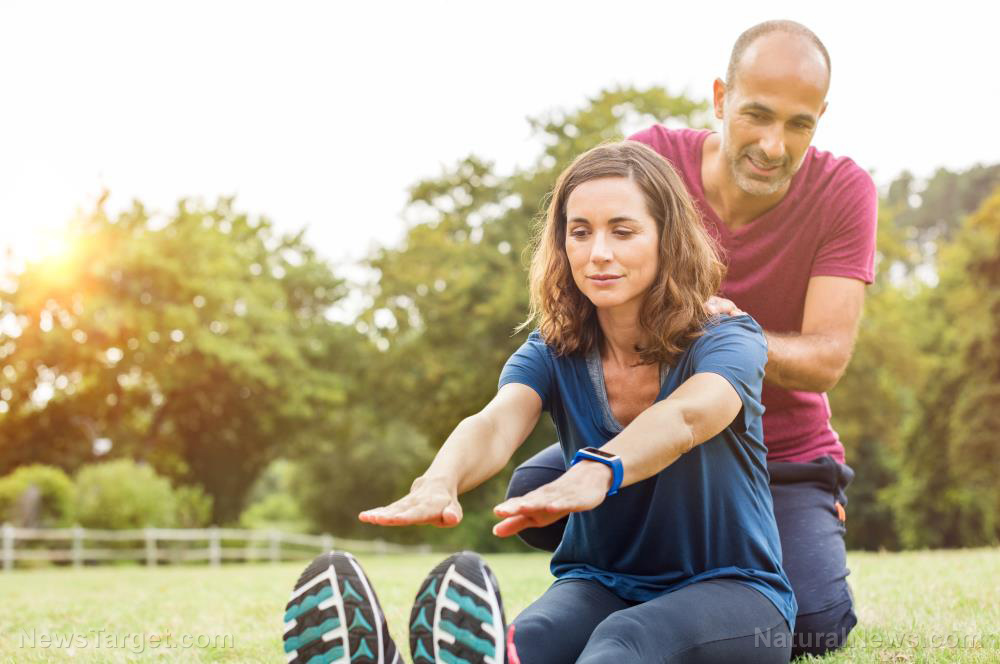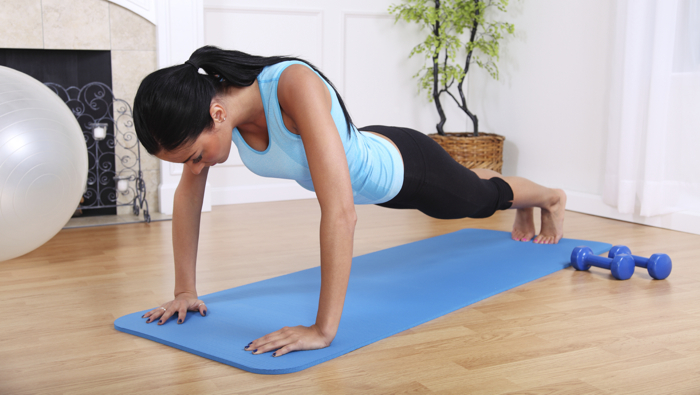Maintaining wellness: The importance of stretching and staying limber
07/11/2019 / By Zoey Sky

It is common to hear that exercising daily for at least 30 minutes helps improve your overall well-being. But did you know that stretching also offers various health benefits such as improving your flexibility and strengthening your muscles?
Stretching, or flexibility exercise, is a form of exercise that targets major muscle groups. This kind of exercise helps prepare the muscles before you use them for various physical activities.
Take note that stretching is different from warm up and cool down exercises. It is beneficial to combine elements of stretching with both when exercising for better results.
The two types of stretching exercises
There are two types of stretches: static and dynamic stretches.
- Dynamic stretches – Dynamic stretches involve active movements that make the muscles stretch. However, the stretch isn’t held in the end position. You can do dynamic stretches before exercising to prepare the muscles for movement.
- Static stretches – In this type of stretching exercise, you hold a stretch in a comfortable position for a period of time, usually between 10 and 30 seconds. It is best to do static stretches after exercising.
The health benefits of stretching
Doing stretches also offers the following health benefits.
- It can help increase your range of motion, giving you more freedom of movement.
- Stretching before you exercise can help prevent muscle tears or injuries.
- It can help improve your flexibility. This is essential for your overall well-being, especially as you age. Stretching regularly can help delay the reduced mobility associated with aging. (Related: Older people who engage in frequent muscle stretching reduce their risk of lower leg problems.)
- It can also help reduce muscle soreness after a strenuous workout.
- Stretching can help improve your posture. Combine strengthening and stretching exercises for specific muscle groups to reduce musculoskeletal pain and encourage proper alignment. Both exercises can improve your posture.
- It can relieve stress. A person who is stressed usually has tense muscles since muscles tighten up due to emotional or physical stress. Try stretching exercises that target areas of the body that tend to hold stress, like your neck, shoulders, or your upper back.
How to stretch safely and effectively
If you’re not sure how to stretch properly and you don’t want to hurt yourself, follow the tips below.
- Lie down on your bed or on a yoga mat on the floor.
- Start with your legs and arms and stretch them out fully and slowly. Don’t use “jerky” motions that might strain your muscles.
- Once you’re done stretching your legs and arms, start massaging and kneading your thighs vertically with your palms while lying on your back.
- Stretch your legs, then gently massage your calf muscles.
- Flex and extend your feet up and down.
- Stretch out your arms, then massage your biceps — the muscles at the front of your upper arm — and triceps — the muscles at the back of your upper arm — for at least one minute with the opposite hand.
- Interlock the fingers of your hands and stretch out your arms, then breathe deeply. The more deeply you breathe, the more oxygen reaches your muscles.
- Massage your neck muscles with your hands. Stand up slowly.
As you get used to stretching daily, you can try a more intense exercise by using an elastic band to further stretch your muscles.
Stretch your muscles regularly to become more limber and improve blood flow to your extremities. If you’re not used to exercising, use stretching to gently help your body become accustomed to physical activity. Once you’re more limber, consider full-on exercise sessions to boost your overall health.
Stretching isn’t just something you do before you exercise. Whether you’re young or old, different types of stretches can help improve your flexibility and range of motion.
Sources include:
Submit a correction >>
Tagged Under:
blood flow, dynamic stretches, exercise, fitness, flexibility, flexibility exercises, improved circulation, muscle health, muscle injuries, muscle strength, muscle stretching, muscle tears, prevention, static stretches, strengthening exercises, stress relief, stretch exercises, stretching, tense muscles
This article may contain statements that reflect the opinion of the author
RECENT NEWS & ARTICLES
COPYRIGHT © 2017 MENS FITNESS FOCUS




















